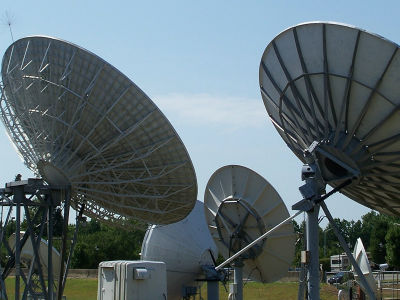Plans are underway to dig a 'insanely deep hole' and get enormous energy

Many people may think of solar energy and wind power as the renewable energy used for power generation, but
Radical Plan to Make Earth's Deepest Hole Could Unleash Limitless Energy
https://www.sciencealert.com/confidence-grows-in-mit-spin-off-aiming-to-make-the-deepest-hole-for-limitless-energy
Among renewable energies, the power generation method that uses geothermal power, which has a light shadow, is somewhat left behind as solar power generation and wind power generation develop. Reasons why geothermal power generation has not spread are 'low thermal conductivity of rocks', 'low efficiency', 'cost of excavation', etc. Even in Japan, which has many volcanoes and abundant geothermal resources in the world. It is said that geothermal power generation will account for only 0.25% of the total power generation in Japan in 2020.
Why is geothermal power generation slow to spread? --GIGAZINE

To solve the problem of few places where geothermal heat can be obtained, Quaise has set the goal of 'digging holes to a depth where geothermal heat can be easily obtained and obtaining enormous amounts of renewable energy.' Since spinning out from MIT in 2020, Quaise has raised a total of 63 million dollars (about 7.32 billion yen), which shows the high degree of attention.
At the time of writing the article, the 'deepest artificially dug hole' is the Kola Peninsula ultra-deep pit that was once excavated in the Kola Peninsula , Murmansk Oblast, in the northwestern part of the Soviet Union. The deepest part of the pit reaches 12,262m, but Quaise claims that it can dig deeper holes by using the latest technology.
There are various obstacles to excavating deep holes, one of which is that 'rock must be excavated in a high temperature environment of over 180 degrees Celsius'. In order to overcome this obstacle, Quaise is devising to use a device called a gyrotron instead of a drill for excavation in the ultra-deep part.
A gyrotron is a device that can efficiently emit a powerful electromagnetic radiation beam by using the kinetic energy of electrons that rotate at high speed along a magnetic field, and is mainly used to heat plasma in fusion reactions . increase. Quaise claims that by combining a state-of-the-art drilling rig with a gyrotron, it can melt rock and dig a hole about 20km deep in just a few months. At the bottom of the hole, which reaches a depth of about 20 km, the temperature of the bedrock reaches about 500 degrees, so it is possible to convert the liquid sent by the pump into steam etc. with geothermal heat and use it for power generation.

Quaise plans to use the funds raised to develop a device that can be used for proof-of-concept experiments within the next two years, and plans to build a power generation system by 2026. In 2028, we would like to take over the old coal-fired power plant and convert it into a facility that uses the geothermal energy extracted from the dug hole to generate electricity.
Even if you fail to dig a deep hole, the already available geothermal energy alone will cover 8.3% of the world's energy supply, and 17% of the world's population can live on geothermal power alone. That's right. However, at the time of writing the article, the ratio of geothermal power generation to the total power generation in the world is less than 0.5%, and it can be said that the spread of geothermal power generation is important to stop climate change. 'There is a lot of room for growth in geothermal power,' said Science Alert, a scientific media outlet. 'It's unclear at this point if companies like Quaise will rejuvenate the previously overlooked interest in geothermal power.' Said.
Related Posts:
in Science, Posted by log1h_ik






